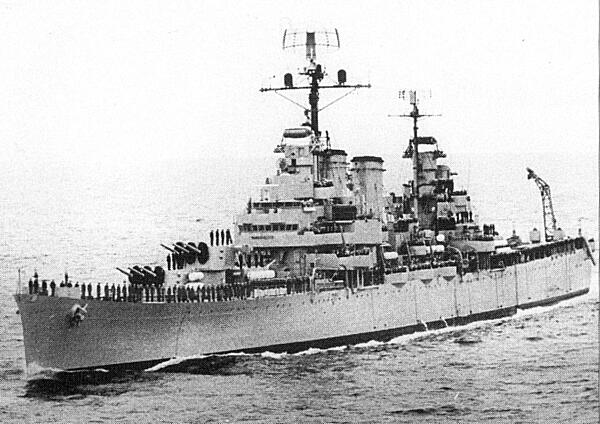General Belgrano
The Argentine cruiser known as The General Belgrano, went down during the Falklands War of 1982, after she was attacked by the submarine HMS Conqueror. She sank with a considerable number of men on board.
The General Belgrano, an Argentine cruiser, was lost at sea during the Falklands War, on 2 May 1982. She was attacked by the hunter-killer submarine known as HMS Conqueror and her loss also saw a large number of Argentine troops killed.
First launched in 1938 to be an American light cruiser, Belgrano was first known as the USS Phoenix and was based at Pearl Harbour when the Japanese attacked in 1941. Following the War, the ship was decommissioned in 1946 and was then sold on to the Argentine Navy in 1951. The Argentines then gave the ship the name General Belgrano, in honour of General Manuel Belgrano who had been a key military figure who had played a major part in the country’s fight for independence.

The ship was patrolling an area just to the south of the Falkland Islands on 29 April 1982, along with two other destroyers. The ships were picked up on the radar belonging to HMS Conqueror and the submarine began working its way towards them on 30 April. The Belgrano was viewed as a major threat to the British Task Force as a result of her large collection of weapons and her sheer weight – she weighed in at 12,000 tons when loaded with men and goods. Despite being outside the Total Exclusion Zone around the Islands that had been put in place by the British Government, the ship was still seen as a threat that the Task Force wished to remove. As a result, HMS Conqueror’s commander, Chris Wreford-Brown, was given the green flag to launch an attack on the ship.
The Conqueror fired three torpedoes at the ship on 2 May, the first of which hit the bow but did not causing any major damage to be done. No deaths or injuries were caused to the Argentines as a result of this first stage of the attack. Meanwhile, the second torpedo fired by the British submarine hit the stern of the Belgrano, leading to huge damage and causing around 275 Argentine deaths. The ship’s electrical system was also so badly damaged that its captain was unable to make the necessary distress call to the destroyers. The ship’s Captain, Hector Bonzo, ordered the evacuation of the whole ship twenty minutes after the first attack by the submarine. Seven hundred and seventy men were collected and rescued by lifeboats, however 323 men lost their lives, making this event the largest single loss of life during the Falklands War.
Following the attack, queries were raised about whether it should have taken place, as the ship was outside the Exclusion Zone, however the British Government said that, as the Belgrano represented such a threat to the Task Force, the attack was essential. Even the Captain of the ship, Bonzo, supported this, saying that the ship was not sailing to its port, but rather that it was moving away to wait for further orders, and these could well have included launching an attack on the British Task Force. Admiral Sandy Woodward, the naval commander of the Task Force, also said that Belgrano could have easily turned quickly and travelled towards the British troops, so it was indeed the threat it was feared to be.
The Argentine Government had been given a message from the British Government on 23 April 1982, saying that the British were allowed to take ‘whatever action’ was needed in order to protect its Task Force if any Argentine “warship, including submarines, naval auxiliaries or military aircraft” appeared to be a threat. Argentina was shaken by the sinking of the General Belgrano, after which point the country’s Navy was kept in port, in a bid to protect it and its aircraft carrier, the Veinticinco de Mayo. As a result of this, it relied heavily on its air force to defend against and attack the British. However, this was to prove not enough to win the conflict.
See also: HMS Sheffield
MLA Citation/Reference
"General Belgrano". HistoryLearning.com. 2026. Web.
